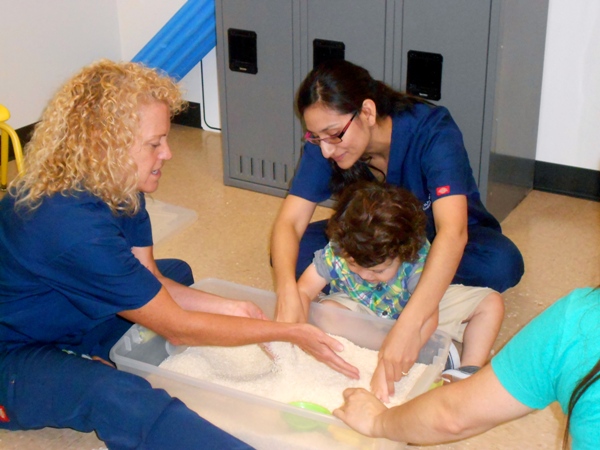What is ABA Therapy?
So, what exactly is ABA, or Applied Behavioral Analysis?
ABA is an intervention therapy that specifically addresses behavior. ABA is one of the proven best practice therapies for children on the autism spectrum, including Aspergers. Thousands of research articles have documented the effectiveness of ABA in individuals with autism across behaviors, settings, and specialists. The behaviors that ABA seeks to address could relate to academics, communication, challenging behaviors, and other daily living skills.
ABA, as a field, seeks to understand and improve human behavior—the goal of many disciplines. What sets ABA apart from other fields is the approach and process. Professionals trained in ABA—or behavior analysts—break down each component of interactions to understand this behavior.
In ABA, behaviors are analyzed by looking at antecedents, behaviors, and consequences. These are known as the ABCs of ABA.
- A = Antecedents (what happened before the behavior)
- B = Behavior (the behavior targeted for intervention)
- C = Consequence (what happened after the behavior)
For example, a child sees a box full of cookies on the table that his mother just took out of the pantry (antecedent). He asks her, “Mom, can I have a cookie please” (behavior). His mother tells him that he must eat his omelet before he can have a cookie (consequence).
Behavior analysts believe that adaptive and maladaptive behaviors are learned, and can be changed.
Basic principles of ABA state that when behavior is followed by something pleasant, it will occur more often in the future. In the same way, when a behavior is followed by something unpleasant, it will occur less often in the future. Behavior analysts utilize these principals of behavior to understand and improve human behavior.
Here is a general process for developing interventions utilizing ABA:
- Select the target behavior that is socially significant, observable, and measurable
- Clearly and specifically define this behavior
- Utilize principles of ABA to develop interventions
- Collect data in a way that demonstrates the changes in the target behavior are due to the intervention implemented and determine the impact of the intervention
- Make educational/therapeutic decisions based on the data.
It is key that an ABA intervention be effective. Meaning, the changes produced in the behavior are significant enough to make a difference in the person’s life outside of the context in which the intervention was implemented.
Now you know a little bit about the basics of ABA as a field. Do you think this process would apply to your child?
By Berenice de la Cruz, Director of Training and Research at Autism Community Network
Sources
Baer, D. M., Wolf, M. M., & Risley, T R.(1968). Some current dimensions of applied behavior analysis. Journal of Applied Behavior Analysis, 1, 91-98.
Cooper, J. O., Heron, T. E., & Heward, W. L. (1987). Applied Behavior Analysis. Prentice-Hall: New Jersey.
A graduate of Abilene Christian University, Jennifer had a long career in TV Broadcasting. Upon learning her oldest son Sam had a form of Autism called Asperger’s Syndrome, she left her career and became a full-time mother to both of her sons. Jennifer elicited the participation of her family and together they produced several independent programs including a children’s animated series titled Ameriquest Kids, as well as a documentary and book titled, Coping to Excelling: Solutions for School-age Children Diagnosed with High-Functioning Autism or Aspergers Syndrome. She formed the nonprofit Asperger101 to provide on-going free resources related to ASD at Aspergers101.com and has implemented the Texas Driving with Disability Program and continues to grow the statewide initiative today. She and her husband have recently retired to their property in the Texas Hill Country.





